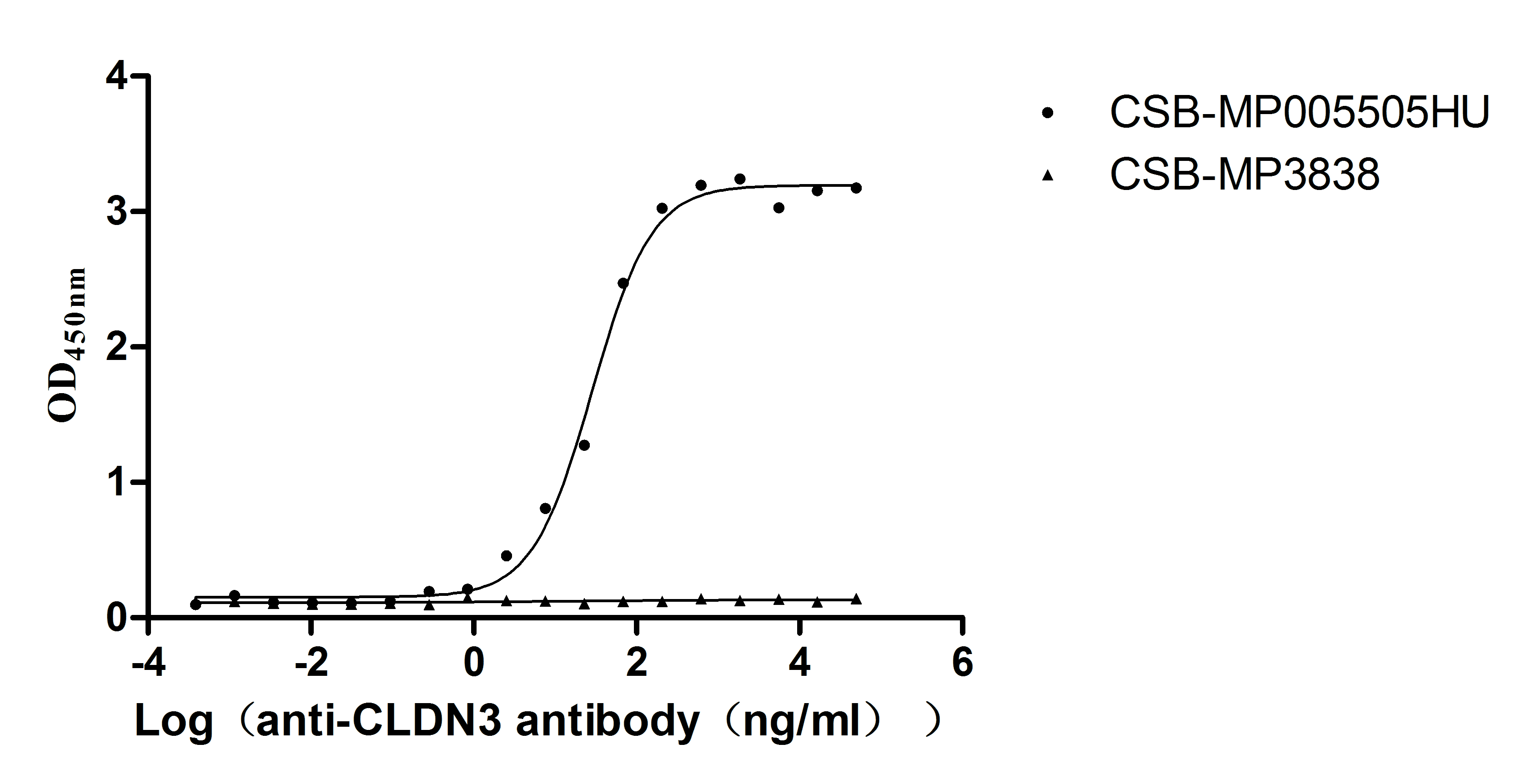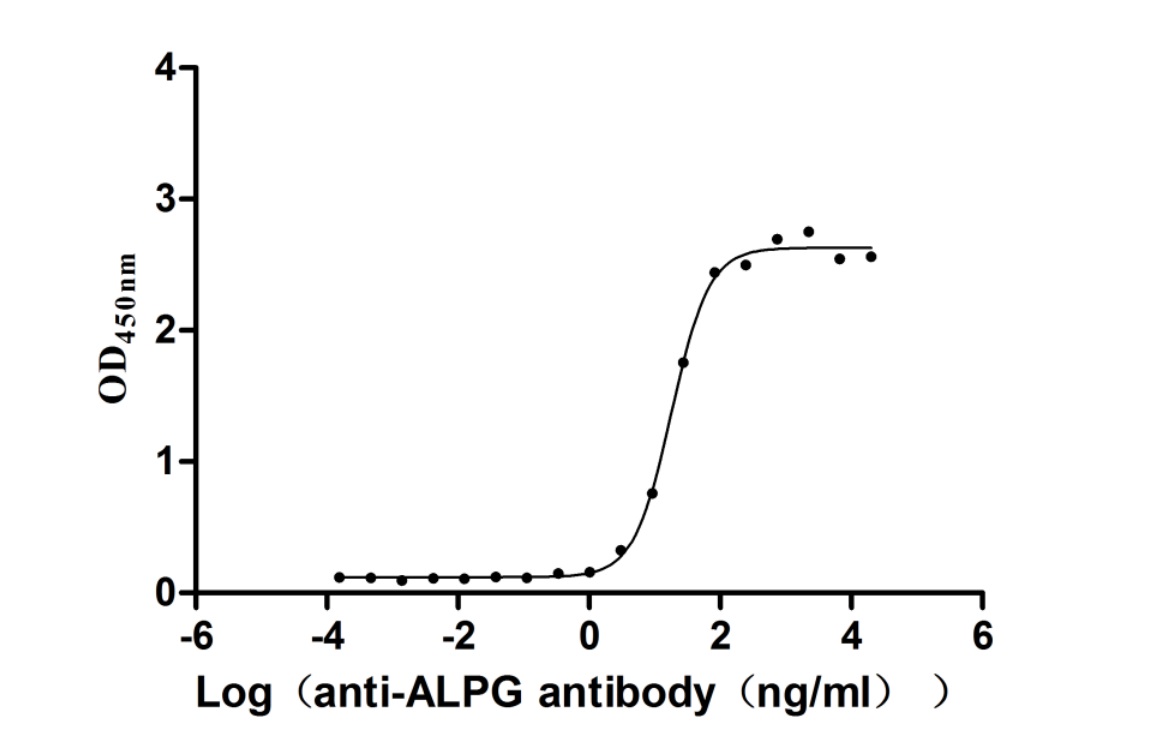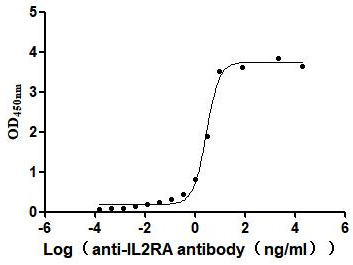Recombinant Mouse Transient receptor potential cation channel subfamily V member 4 (Trpv4), partial
In Stock-
中文名称:Recombinant Mouse Transient receptor potential cation channel subfamily V member 4 (Trpv4), partial
-
货号:CSB-EP875332MO1
-
规格:
-
图片:
-
其他:
产品详情
-
纯度:Greater than 90% as determined by SDS-PAGE.
-
生物活性:Not Test
-
基因名:
-
Uniprot No.:
-
别名:TrpV4;Osm-9-like TRP channel 4;OTRPC4;Transient receptor potential protein 12;TRP12;Vanilloid receptor-like channel 2;Vanilloid receptor-like protein 2;Vanilloid receptor-related osmotically-activated channel;VR-OAC
-
种属:Mus musculus (Mouse)
-
蛋白长度:Partial
-
来源:E.coli
-
分子量:59.9 kDa
-
表达区域:1-469aa
-
氨基酸序列MADPGDGPRAAPGEVAEPPGDESGTSGGEAFPLSSLANLFEGEEGSSSLSPVDASRPAGPGDGRPNLRMKFQGAFRKGVPNPIDLLESTLYESSVVPGPKKAPMDSLFDYGTYRHHPSDNKRWRRKVVEKQPQSPKAPAPQPPPILKVFNRPILFDIVSRGSTADLDGLLSFLLTHKKRLTDEEFREPSTGKTCLPKALLNLSNGRNDTIPVLLDIAERTGNMREFINSPFRDIYYRGQTSLHIAIERRCKHYVELLVAQGADVHAQARGRFFQPKDEGGYFYFGELPLSLAACTNQPHIVNYLTENPHKKADMRRQDSRGNTVLHALVAIADNTRENTKFVTKMYDLLLLKCSRLFPDSNLETVLNNDGLSPLMMAAKTGKIGVFQHIIRREVTDEDTRHLSRKFKDWAYGPVYSSLYDLSSLDTCGEEVSVLEILVYNSKIENRHEMLAVEPINELLRDKWRKFGAV
Note: The complete sequence including tag sequence, target protein sequence and linker sequence could be provided upon request. -
蛋白标签:N-terminal 6xHis-tagged
-
产品提供形式:Liquid or Lyophilized powder
Note: We will preferentially ship the format that we have in stock, however, if you have any special requirement for the format, please remark your requirement when placing the order, we will prepare according to your demand. -
缓冲液:If the delivery form is liquid, the default storage buffer is Tris/PBS-based buffer, 5%-50% glycerol. If the delivery form is lyophilized powder, the buffer before lyophilization is Tris/PBS-based buffer, 6% Trehalose, pH 8.0.
-
复溶:We recommend that this vial be briefly centrifuged prior to opening to bring the contents to the bottom. Please reconstitute protein in deionized sterile water to a concentration of 0.1-1.0 mg/mL.We recommend to add 5-50% of glycerol (final concentration) and aliquot for long-term storage at -20℃/-80℃. Our default final concentration of glycerol is 50%. Customers could use it as reference.
-
储存条件:Store at -20°C/-80°C upon receipt, aliquoting is necessary for mutiple use. Avoid repeated freeze-thaw cycles.
-
保质期:The shelf life is related to many factors, storage state, buffer ingredients, storage temperature and the stability of the protein itself.
Generally, the shelf life of liquid form is 6 months at -20°C/-80°C. The shelf life of lyophilized form is 12 months at -20°C/-80°C. -
货期:3-7 business days
-
注意事项:Repeated freezing and thawing is not recommended. Store working aliquots at 4℃ for up to one week.
-
Datasheet & COA:Please contact us to get it.
相关产品
靶点详情
-
功能:Non-selective calcium permeant cation channel involved in osmotic sensitivity and mechanosensitivity. Activation by exposure to hypotonicity within the physiological range exhibits an outward rectification. Also activated by heat, low pH, citrate and phorbol esters. Increase of intracellular Ca(2+) potentiates currents. Channel activity seems to be regulated by a calmodulin-dependent mechanism with a negative feedback mechanism. Acts as a regulator of intracellular Ca(2+) in synoviocytes. Plays an obligatory role as a molecular component in the nonselective cation channel activation induced by 4-alpha-phorbol 12,13-didecanoate and hypotonic stimulation in synoviocytes and also regulates production of IL-8. Together with PKD2, forms mechano- and thermosensitive channels in cilium. Promotes cell-cell junction formation in skin keratinocytes and plays an important role in the formation and/or maintenance of functional intercellular barriers. Negatively regulates expression of PPARGC1A, UCP1, oxidative metabolism and respiration in adipocytes. Regulates expression of chemokines and cytokines related to proinflammatory pathway in adipocytes. Together with AQP5, controls regulatory volume decrease in salivary epithelial cells. Required for normal development and maintenance of bone and cartilage. In its inactive state, may sequester DDX3X at the plasma membrane. When activated, the interaction between both proteins is affected and DDX3X relocalizes to the nucleus.
-
基因功能参考文献:
- Muscarinic stimulation of saliva and tear secretion was down-regulated in TRPV4-deficient mice. Temperature dependence of muscarinic salivation was depended mainly on TRPV4. PMID: 29187363
- mediates immediate LPS-induced increases in ciliary beat frequency and the production of bactericidal nitric oxide PMID: 29057902
- that TRPV4 activation results in the proliferation of stem cells in the adult hippocampal dentate gyrus PMID: 27660267
- a role of TRPV4 in skin diseases such as systemic scleroderma. PMID: 27889423
- TRPV4 plays a key role in LL37- driven mast cell activation in rosacea. PMID: 27908695
- High TRPV4 expression is associated with maternal fever-associated birth defects. PMID: 29018170
- Cartilage-specific knockout of TRPV4 decreases age-related osteoarthritis. PMID: 27388701
- TRPV4 was shown to be required for breast cancer cell invasion and transendothelial migration but not growth/proliferation. Knockdown of Trpv4 significantly reduced the number of metastatic nodules in mouse xenografts leaving the size unaffected. PMID: 27291497
- Findings indicate that TRPV4 channels function as a critical component of mechano-sensitive, Ca2+-signaling machinery within the trabecular meshwork (TM), and that TRPV4-dependent cytoskeletal remodeling regulates TM stiffness and outflow. Thus, TRPV4 is a potential IOP sensor within the conventional outflow pathway. PMID: 27510430
- Study found that TRPV4, but not AQP4, contributes to the calcium influx into astrocytes and neurons as well as glutamate accumulation during middle cerebral artery occlusion stroke model-associated peri-infarct depolarizations (PIDs), but that neither channel influences the threshold for PID in the first hours after stroke. PMID: 28639721
- The findings identify a novel role for TRPV4 in regulating macrophage foam cell formation by modulating uptake of oxLDL. PMID: 28602913
- Fluorescence resonance energy transfer experiments showed that FliI-NMMIIA interactions require Ca(2+) influx. We conclude that Ca(2+) influx through the TRPV4 channel regulates FliI-NMMIIA interaction, which in turn enables generation of the cell extensions essential for collagen remodeling PMID: 28526784
- Regulation of TRPV4 activity in the distal nephron by dietary potassium is an indispensable component of whole body potassium balance. PMID: 28187982
- Both TRPV4 and PIEZO1 channels contribute to currents activated by stimuli applied at cell-substrate contacts but only PIEZO1 mediates stretch-activated currents. These data demonstrate that there are separate, but overlapping, mechanoelectrical transduction pathways in chondrocytes. PMID: 28135189
- These results suggest that TRPV4, TRPV3 and TRPM8 proteins, but not their ion channel activities are necessary for the induction of CIPs at 32 degrees C. Identification of proteins that differentially interact with these TRP channels at 37 degrees C and 32 degrees C would help elucidate the underlying mechanisms of CIP induction by hypothermia. PMID: 29175331
- we show that TRPV4 is activated both by damage associated molecular pattern HMGB1 and collagen in diseased Kupffer cells that in turn activate the endothelial NOS (NOS3) to release nitric oxide (NO). The diffusible NO acts in a paracrine fashion in neighboring hepatocytes to deactivate the redox toxicity induced by CYP2E1 PMID: 27913210
- these data suggest that TRPV4 regulates angiogenesis endogenously via modulation of endothelial cells mechanosensitivity PMID: 27029071
- studies identified TRPV4 as a channel that contributes to both histamine- and chloroquine-induced itch and indicated that the function of TRPV4 in itch signaling involves TRPV1-mediated facilitation. PMID: 27436359
- Our observations thus suggest that the TRPV4 ion channel is involved in mechanotransduction in juxtaglomerular cells. PMID: 27779758
- TRPV4-knockout mice were protected from D. farinae-induced airway remodeling. TRPV4 modulated matrix remodeling in the lung via 2 distinct but dependent pathways: one enhances matrix deposition by fibrotic gene activation, whereas the other slows down matrix degradation by increased plasminogen activator inhibitor 1. PMID: 28073835
- Study found that hypotonicity in the portal circulation, probably sensed by TRPV4 channels, triggers the osmopressor response and intact renal nerves are needed for the full response. PMID: 28143710
- Altogether, these data identify a novel reciprocal functional link between TRPV4 activation and TGFbeta1 signals regulating dermal myofibroblast differentiation. These findings suggest that therapeutic inhibition of TRPV4 activity may provide a targeted approach to the treatment of scleroderma. PMID: 28249987
- clock genes exist in the mouse bladder mucosa and regulate exact circadian gene expression in mice PMID: 28060940
- Dynamic coupling between TRPV4 and Ca(2+)-activated SK1/3 and IK1 K(+) channels plays a critical role in regulating the K(+)-secretory BK channel KCNMA1 in kidney collecting duct cells. PMID: 28274924
- TRPV4 channels are important for bladder afferent signaling. TRPV4 -/- mice bladders generate more noxious sensory output, which is predominantly mediated through TRPV1 expressing high threshold nerve fibers. PMID: 27491796
- TRPV4 does not play a major role in the kidney or is efficiently compensated when deleted. TRPV4 is critical for the release of vasopressin, the sensation of thirst, and the central osmoregulation. PMID: 27364478
- These results suggest that the Na(+) signal generated in Nax-positive glial cells leads to the activation of TRPV4-positive neurons in sCVOs to stimulate water intake by using EETs as gliotransmitters. PMID: 27252474
- TRPV4 plays a critical role in the transduction of mechanical forces and gets activated by cell swelling and surface expansion. PMID: 27861175
- The absence of TRPV4-ATP-mediated effects on C-fibers indicates a distinct neurobiology for this ion channel and implicates TRPV4 as a novel therapeutic target for neuronal hyperresponsiveness in the airways and symptoms, such as cough. PMID: 26792207
- Here we analyzed sperm motility function of Trpv4 knockout (KO) mouse in temperature-gradient conditions to elucidate the thermotaxis of mouse sperm and the involvement of TRPV4 in thermotaxis. Large numbers of wild-type (WT) mouse sperm migrated into the high level of the temperature gradient, and thermotaxis was confirmed. The ratio of migrated sperm at the high temperature level was decreased in the KO sperm. PMID: 27180924
- TRPV4 is expressed in mouse and rat gastric epithelium and contributes to ATP release and gastric emptying. PMID: 27350729
- TRPV4 protein was expressed after RAW 264.7 cells were treated with PPARgamma inhibitor T0070907 or preincubated with T0070709 before incubation with oxLDL for 24 h.T0070907 enhanced the basal expression of TRPV4 and protected RAW264.7 cells from oxLDL-induced TRPV4 down-regulation. PMID: 27706112
- TRPV4 channel activity modulates uterine contractility and might represent a therapeutic target to address preterm labor. PMID: 26702092
- TRPV4-AQP4 interactions 'turbocharge' astroglial sensitivity to small osmotic gradients PMID: 26760501
- The results support a model whereby TRPV4 differentially regulates cell volume, lipid, and calcium signals in nonpigmented epithelial and pigment epithelial cell types and therefore represents a potential target for antiglaucoma medications. PMID: 27006502
- TRPV4 functions as a pruriceptor-TRP in skin keratinocytes in histaminergic itch, a novel basic concept with translational-medical relevance PMID: 26961876
- the activation of TRPV4 is upregulated and involved in neuronal injury during cerebral ischemia PMID: 25399955
- Aquaporin-mediated fast swelling kinetics play a key role in cell volume regulation (together with TRPV4) and calcium signaling in astrocytes PMID: 26413835
- In subcutaneous adipose tissue, a high fat diet elevated TRPV4, exercise, and exercise plus rutin completely reduced TRPV4 to normal level. PMID: 26424736
- TRPV4 regulates neuronal excitability and social behavior through its activation at the physiological temperature in vivo. PMID: 26250433
- TRPV4-mediated nociceptive information from the peripheral tissue excluding the spinal pathway might be involved the formalin behavioral response during phase I. Only TRPV1 might regulate the formalin behavioral response in peripheral neuron. PMID: 26314785
- TRPV4 channels regulate tumor angiogenesis by selectively inhibiting tumor endothelial cell proliferation. PMID: 26388427
- Identify TRPV4 as novel regulator of neutrophil activation and suggest contributions of both parenchymal and neutrophilic TRPV4 in the pathophysiology of acute lung injury. PMID: 26222277
- Our findings demonstrate TRPV4 channels to be critical regulators of tumor angiogenesis and represent a novel target for anti-angiogenic and vascular normalization therapies. PMID: 25867067
- GPCR-TRPV4 channel interactions comprise a key signalling pathway for the endothelium-dependent regulation of vascular tone. PMID: 25572823
- The findings suggest that signaling through TRPV4, triggered by changes in extracellular matrix stiffness, cooperates with LPS-induced signals to mediate macrophage phagocytic function and lung injury resolution. PMID: 26597012
- Data suggest that blockage of transient receptor potential (TRP) channels TRPA1, TRPV4 and possibly TRPM8 may represent a therapeutic option for patients with colonic discomfort and pain. PMID: 26207981
- P2Y1 couples to and activates TRPV4. PKC inhibitors prevented P2Y1 receptor activation of TRPV4. PMID: 26475857
- that TRPV4 channel is involved in the recruitment of behavioural and autonomic warmth-defence responses to regulate core body temperature PMID: 25739906
- activation of TRPV4 induces apoptosis by downregulating PI3K/Akt and upregulating p38 MAPK signaling pathways, which is involved in cerebral ischemic injury. PMID: 26043075
显示更多
收起更多
-
亚细胞定位:Cell membrane. Apical cell membrane; Multi-pass membrane protein. Cell junction, adherens junction. Cell projection, cilium.
-
蛋白家族:Transient receptor (TC 1.A.4) family, TrpV subfamily, TRPV4 sub-subfamily
-
组织特异性:Detected in liver, kidney, heart, brain cortex, cerebellum and brainstem (at protein level). Expressed in salivary glands (at protein level). Expressed in heart, lung, spleen, liver, kidney, brain, skeletal muscle and testis. In the central nervous system
-
数据库链接:
Most popular with customers
-
Recombinant Human Cytokine receptor common subunit beta (CSF2RB), partial (Active)
Express system: Mammalian cell
Species: Homo sapiens (Human)
-
Recombinant Mouse Prolactin receptor (Prlr), partial (Active)
Express system: Mammalian cell
Species: Mus musculus (Mouse)
-
Recombinant Human B-lymphocyte antigen CD20 (MS4A1)-VLPs (Active)
Express system: Mammalian cell
Species: Homo sapiens (Human)
-
Recombinant Human R-spondin-1 (RSPO1), partial (Active)
Express system: Mammalian cell
Species: Homo sapiens (Human)
-
Recombinant Human Claudin-6 (CLDN6)-VLPs (Active)
Express system: Mammalian cell
Species: Homo sapiens (Human)
-
Recombinant Human Claudin-3 (CLDN3)-VLPs (Active)
Express system: Mammalian cell
Species: Homo sapiens (Human)
-
Recombinant Human Alkaline phosphatase, germ cell type (ALPG) (Active)
Express system: Mammalian cell
Species: Homo sapiens (Human)
-
Recombinant Human Interleukin-2 receptor subunit alpha (IL2RA), partial (Active)
Express system: Mammalian cell
Species: Homo sapiens (Human)

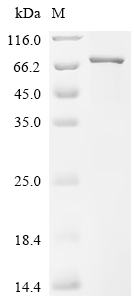

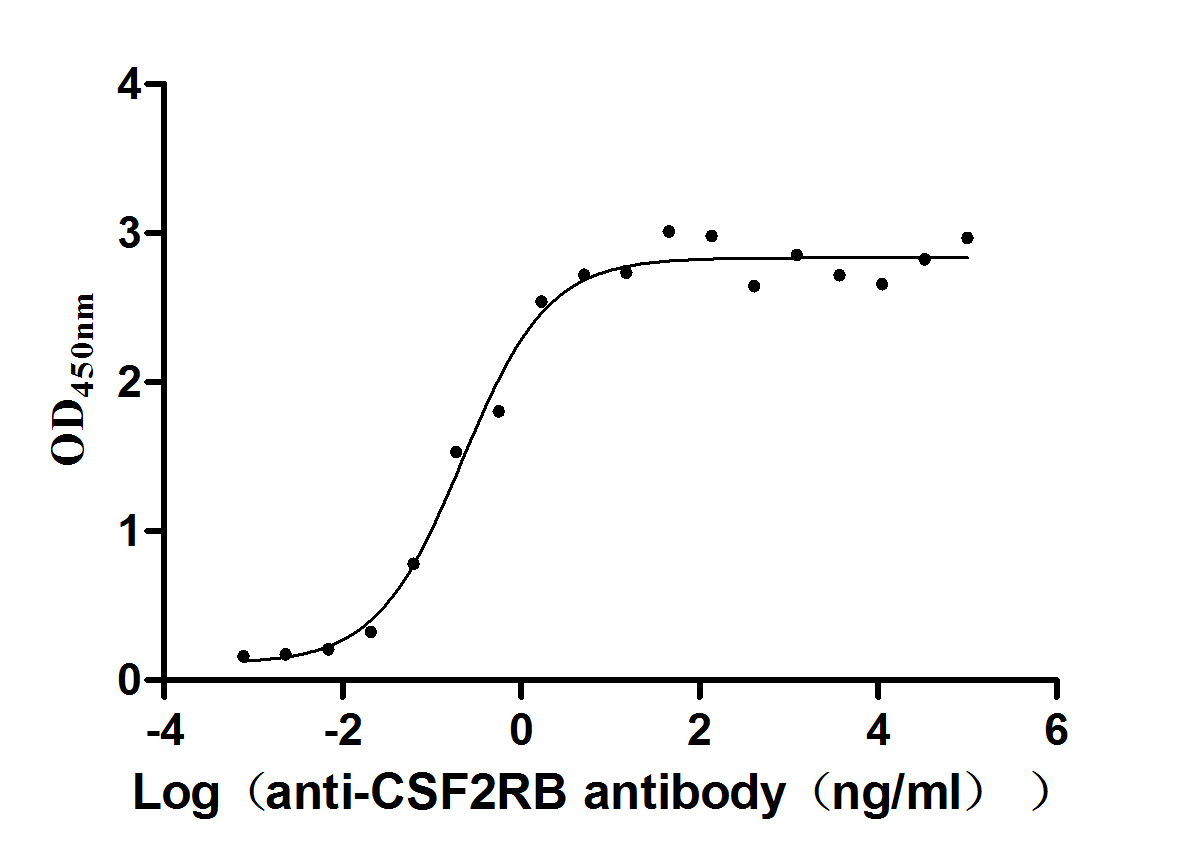

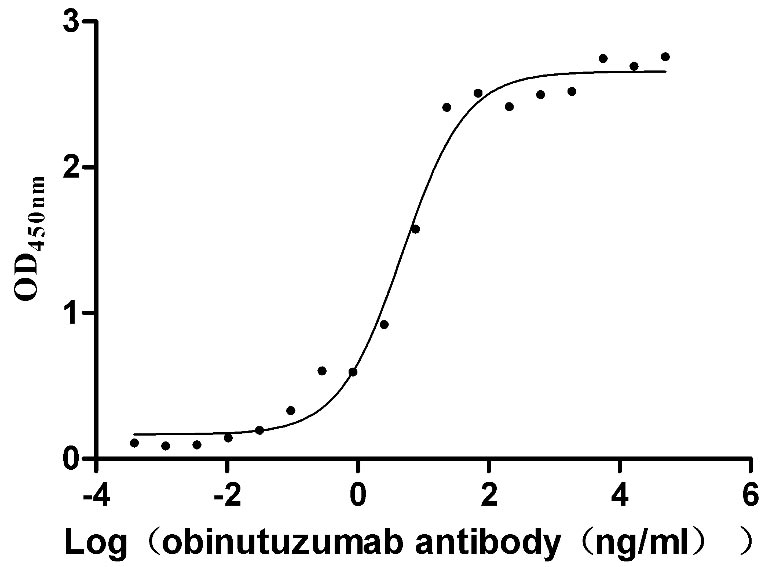
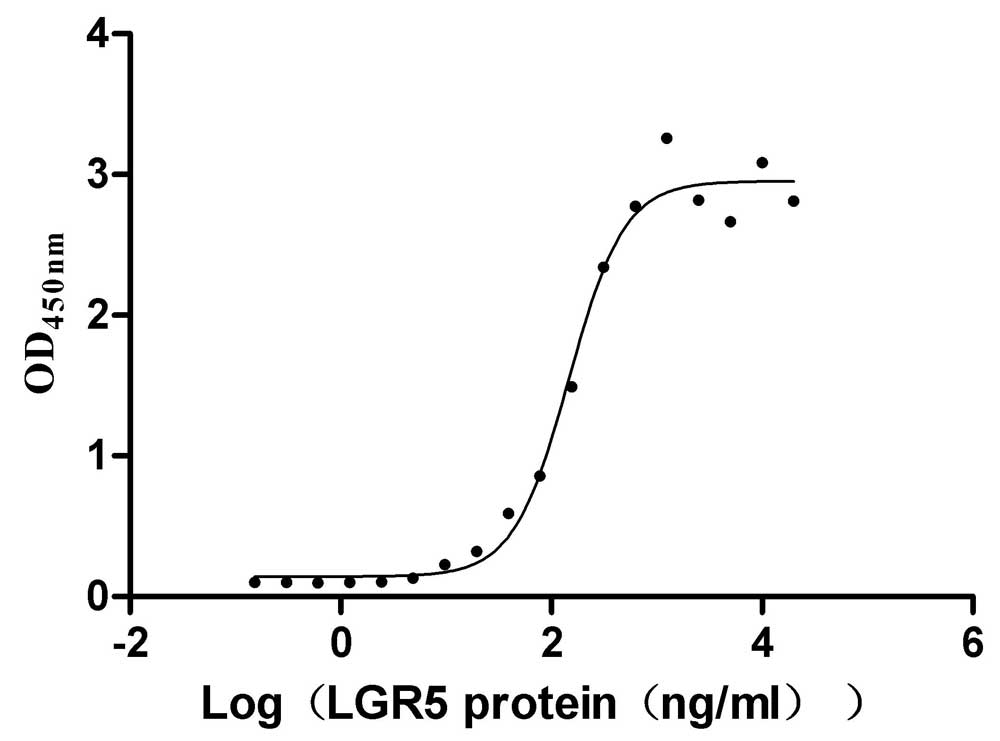
-AC1.jpg)
